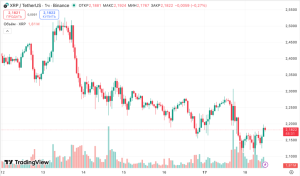Bitcoin Whale Activity Drops Sharply as Prices Slip Below Rs. 90,000 — What’s Driving the Exit?

Bitcoin’s recent descent below Rs. 90,000 has triggered a notable retreat among major holders, commonly referred to as “whales.” This sudden drop in large-scale holdings suggests heightened market uncertainty, shifting investor psychology, and concerns about macroeconomic conditions. As institutional players reduce exposure, liquidity patterns are shifting, prompting analysts to question whether the market is entering a corrective phase or bracing for deeper volatility. This article examines the catalysts behind whale movements, the structural pressures affecting Bitcoin’s valuation, and how these shifts could shape the digital asset market in the near term.
Whale Movements Signal a Turning Point
Large Bitcoin holders play a crucial role in shaping market stability. When wallets containing significant volumes begin offloading assets, liquidity dynamics shift and broader sentiment often adjusts in tandem. The recent decline in whale activity comes at a moment when Bitcoin’s price dipped below Rs. 90,000, a level considered psychologically important for short-term traders.
A contraction in whale holdings can indicate a strategic repositioning rather than panic, but its timing — coinciding with economic uncertainty and declining risk appetite — amplifies market reactions. Investors are increasingly recalibrating their expectations as volatility intensifies.
Macro Pressures Weighing on Bitcoin
Several macroeconomic factors have contributed to the recent sell-off. Inflation concerns, shifting interest-rate expectations, and regulatory developments worldwide have created a cautious environment for digital assets.
High-yield government bonds and safer asset classes have become more attractive, leading some institutional actors to rebalance portfolios away from volatile instruments such as cryptocurrencies.
At the same time, global liquidity has tightened, reducing speculative momentum and limiting the influx of new capital into digital markets.
Risk Management and Portfolio Rebalancing by Big Players
Whales often employ advanced risk-management strategies, and many appear to be transitioning toward defensive positioning. This includes liquidating portions of holdings, diversifying into stablecoins, or reallocating capital toward traditional markets.
These movements don’t necessarily signify long-term bearishness; instead, they reflect a preference for preserving gains accumulated during previous rallies. For seasoned investors, the priority during downturns is often capital preservation rather than chasing short-term recoveries.
Market Psychology and Retail Reactions
As whale activity contracts, retail investors frequently interpret the shift as an early warning. Lower on-chain accumulation by major holders usually affects sentiment, prompting smaller investors to reconsider their risk exposure.
This cascade effect can accelerate downward pressure, especially when leveraged traders are forced to exit positions. The resulting volatility reinforces uncertainty, making recovery slower and more dependent on renewed institutional confidence.
Is This a Temporary Correction or a Structural Trend?
The decline may represent a temporary correction driven by macro headwinds rather than a fundamental breakdown in Bitcoin’s long-term narrative. Historically, whale outflows tend to occur near local peaks or during transitional phases in the market cycle.
However, if regulatory tightening continues or liquidity conditions worsen, the current trend could deepen. Future whale activity will serve as a key indicator for gauging market direction, especially ahead of major policy decisions and technological developments within the crypto ecosystem.
Conclusion: Watching the Big Players to Read the Market
Bitcoin’s fall below Rs. 90,000 and the corresponding decline in whale holdings underscore a shifting sentiment among influential market participants. Whether this marks a broader downturn or a strategic pause remains to be seen.
For investors, understanding whale behavior is essential for interpreting liquidity cycles, market pressure points, and opportunities that emerge during corrections. As the crypto landscape continues to evolve, the movements of large holders will remain a crucial signal for navigating volatility and anticipating market recalibrations.




